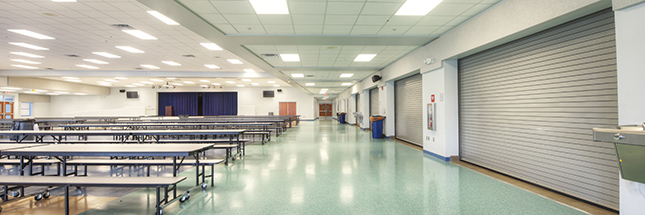Types of Middle Schools

There are not many types of middle schools to choose from however, there are many middle schools that parents can choose from in their district. When selecting a middle school for your child, your decision lies between a public middle school, a private middle school or a junior boarding school. While some middle schools do offer boarding or even home-stay programs, these schools are not nearly as common as public or private middle schools.
Public Middle Schools
Public middle schools can be found in every district in every state in the US. These middle schools are publicly funded – paid for by the taxes that taxpayers pay. This is often cited as one of the biggest advantages to public schools – the fact that they are free to attend as they are paid for by taxes. All middle school-aged children can attend public middle schools. There are no tests or entrance requirements that must be met, as opposed to private middle schools. All students meeting the age requirements are welcome to attend, regardless of academic abilities, religious creed or any other factor.
Typically, there is less free choice over what public middle school in district your child will attend. Your child will go to the public middle school that is in your area, along with the other kids from your neighborhood. However, in some states this is changing. Some states are introducing a policy that allows parents to request a change to the middle school your child attends, according to the boundaries.

Private Middle Schools
Deciding to enroll a student in a private middle school is often a tough decision for parents. One of the biggest disadvantages to private middle schools is the costly annual tuition fees. Tuition can range anywhere from a few thousand dollars a year to more than one hundred thousand dollars. Parents of private school students pay for the public school system in their district plus pay for private school. However, there are some tax breaks parents receive when they send their children to private middle schools over public schools.
Aside from the cost of private middle schools, there are many advantages to choosing a private school for your middle school-aged child. The overcrowding that many public schools face is not found in private middle schools. Also, as private schools do not use funding from the public, they are not nearly as restricted in their curricula and are not faced with the financial limitations that are often imposed by the state government. This financial freedom allows private middle schools to develop their own programs and curricula.
Often, especially in prestigious boarding and private schools, the teachers are more likely to be better qualified, usually possessing higher level awards and graduate degrees. This might explain the outcome of a study that was conducted by Harvard University, that found that students from private schools tended to have higher averages than their counterparts at public school.
Junior Boarding Schools
Junior boarding schools are becoming more popular. These “pre-prep” schools are independent middle schools that have a boarding program. Junior boarding schools focus on the middle school student only; they do not have a secondary school level. These boarding schools are only devoted to the education of early adolescent students. The faculty at these schools have specifically chosen to educate this age group and therefore are more fully committed to these students.
Junior boarding schools provide middle school education for all kinds of students: those who are excelling academically and are seeking higher level of education, students who are in need of a more structured academic day in order to meet their academic potential, or for students who excel in a specific area such as leadership, the arts or athletics. Students in junior boarding schools leave being well-prepared for secondary school.
